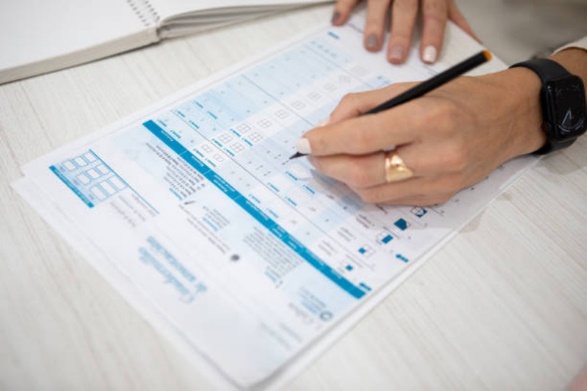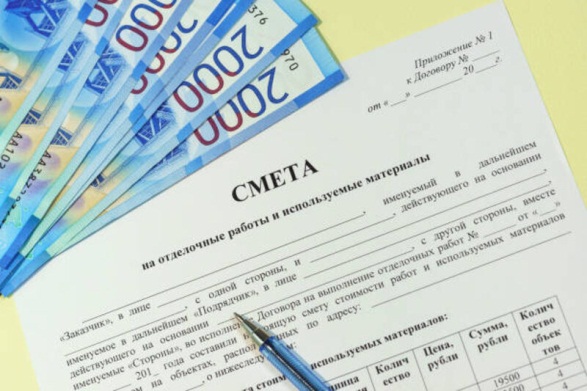Form 8283 Explained: Understanding Noncash Charitable Contributions
Jan 09, 2024 By Susan Kelly
Form 8283, also known as the Noncash Charitable Contributions form, is a document utilized by the United States Internal Revenue Service (IRS). This form, which may appear convoluted at first glance, is in fact a crucial tool for individuals who choose to donate noncash items to nonprofit organizations. The value of the donated items can significantly impact your tax deductions, which makes understanding Form 8283 incredibly important. In this guide, we will unravel the complexities of Form 8283, breaking it down into comprehensible sections, and assisting you in understanding how noncash charitable contributions can affect your tax return. Our aim is to empower you with knowledge, helping you navigate tax season with confidence.
Overview of Form 8283

Form 8283 consists of two main parts: Section A and Section B. The first section is for noncash contributions valued at less than $5,000, while the second section is for noncash contributions valued at more than $5,000. Both sections require different levels of detail on the donated items and may have different requirements from the IRS. Furthermore, both sections must be completed and attached to your tax return in order for the noncash contributions to be eligible for tax deductions.
Section A: Noncash Contributions Valued at Less Than $5,000
Section A of Form 8283 is for individual taxpayers who donated noncash items valued at less than $5,000 during the tax year. This section requires basic information about the donor, the donee organization, and the donated items. The donor must provide a general description of the donated items, their fair market value, and how they were acquired (i.e. purchase, gift, inheritance). Additionally, this section requires a signature from an authorized representative of the donee organization acknowledging receipt of the donated items.
Section B: Noncash Contributions Valued at More Than $5,000
Section B of Form 8283 is for individual taxpayers who donated noncash items valued at more than $5,000 during the tax year. This section requires more detailed information about the donated items, including a description of each item and its fair market value. Additionally, if the donated items were publicly traded securities or intellectual property, the donor must provide the date of acquisition and how they were acquired. This section also requires a signature from an authorized representative of the donee organization.
Purpose of Form 8283
The primary purpose of Form 8283 is to report and substantiate noncash charitable contributions for tax purposes. By completing this form, individuals can provide the necessary documentation for their noncash donations, which can then be used to claim tax deductions on their tax return. It also serves as a way for the IRS to verify the donated items and ensure they meet all requirements for eligibility.
Who should file Form 8283?
Individual taxpayers who have made noncash contributions of $500 or more during the tax year must file Form 8283. This form is also required for partnerships, corporations, and trusts that make noncash donations valued at more than $5,000.
Deadlines for Filing Form 8283
Form 8283 must be filed with your tax return by the due date, including extensions. If you file your tax return electronically, the form can be attached as a PDF document. If filing a paper return, Form 8283 must be attached to the front of your tax return.
Tax Deductions for Noncash Charitable Contributions
Donating noncash items to nonprofit organizations can provide significant tax deductions for individuals. However, it's essential to understand the IRS guidelines for determining the fair market value of donated items. In general, the fair market value is based on what a willing buyer would pay for the item and what a willing seller would accept for it in an arm's length transaction. Appraisals may be required for certain types of donations, such as artwork or real estate.
Record Keeping for Noncash Contributions
In addition to Form 8283, it's essential to keep detailed records of all noncash contributions made during the tax year. This includes receipts from the nonprofit organization, written acknowledgments of donations valued at $250 or more, and any appraisals done on donated items. These records must be kept for at least three years after filing your tax return. Failure to keep accurate records could result in disallowance of tax deductions or penalties from the IRS.
Filing Noncash Charitable Contributions

Filing noncash charitable contributions on your tax return can be a complex process, but it's essential to do so correctly in order to receive the full tax benefits. It's recommended to consult with a tax professional or utilize tax preparation software when filing these types of contributions. Additionally, if you are unsure about the fair market value of your donated items, it may be beneficial to get a professional appraisal. By carefully completing Form 8283 and keeping accurate records, you can confidently claim tax deductions for your noncash charitable contributions.
Common Mistakes when Filing Noncash Charitable Contributions
Some common mistakes that individuals make when filing noncash charitable contributions include:
- Incorrectly determining the fair market value of donated items. It's important to use the correct valuation method and have supporting documentation for your determination.
- Not keeping accurate records of donations, such as receipts and acknowledgments. This could result in disallowance of deductions or penalties.
- Failing to attach Form 8283 to their tax return or not completing it correctly. Both sections must be completed and attached in order for the noncash contributions to be eligible for tax deductions.
Conclusion
Form 8283 is an essential form for individuals who have made noncash charitable contributions during the tax year. By accurately completing this form and keeping detailed records, individuals can confidently claim tax deductions for their donations. It's important to understand the requirements for each section of the form in order to avoid common mistakes and ensure eligibility for deductions. Consulting with a tax professional or utilizing tax preparation software can also help individuals file their noncash contributions correctly. By following these guidelines, individuals can make the most of their charitable giving and receive the full tax benefits. So, it's important to carefully complete Form 8283 and keep accurate records in order to properly report noncash charitable contributions on your tax return.








